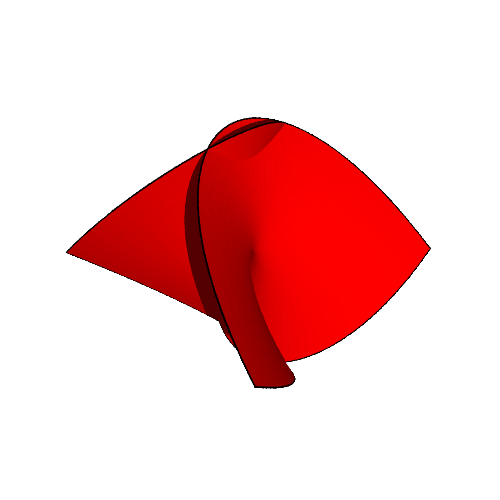Over on the Google+, Dan Drake inverted my challenge to mathematics education faculty. He asks, how can mathematicians share what we have learned?
This is an excellent question, which is pretty hard to answer. Since this is my blog, I’ll follow Pólya’s advice, and attack a simpler problem that I still can’t solve. What is the point of each course in the undergraduate mathematics curriculum?
Linear Algebra
A few weeks ago, I wrote about the real point of linear algebra. As usual, that flash of insight was half-baked. I still stand by it, but I’ve been thinking about the course more as it goes on. Here is a fuller description of what I hope to accomplish in a one-semester linear algebra course at the University of Northern Iowa.
Meta-mathematical goals
Every mathematics course should work on core fundamental skills of mathematical process. In linear algebra, I think the two foremost issues are:
- making examples for yourself to gain understanding, and
- gaining comfort with increased levels of abstraction.
Let’s add another item to this list that I think is important:
- learn the use of modern computational tools to do intensive computations and produce visualizations. (Of course, I am using Sage.)
Content Goals
I would like for students to understand the following.
- solving systems of equations
- vector algebra
- algebra of matrices
- matrices as transformations
- the geometry of euclidean space as encapsulated by the dot product
- determinants
- Gram-Schmidt & orthonormal bases
- eigenvectors and eigenvalues
- “some associated geometry”
I’m not sure anyone would argue with these. Of course, this list leaves a lot out. And I hid a lot inside “some associated geometry.” For starters, the ideas behind a set of vectors being a basis or not are really geometry.
A Skeleton Plan: A Course in Three Acts
Here is how I now view the structure of the course. I am just now finishing up Act Two, so the last bits are just a plan.
Act One: Ways To See A System of Equations
The first part of the course focuses on understanding the various ways to interpret a system of $m$ linear equations in $n$ unknowns.
- The ‘row picture’: view the system as defining
 hyperplanes in
hyperplanes in 
- The ‘column picture’: view the system as defining an equation expressing some vector as a linear combination of
 vectors in
vectors in  .
.
- The ‘transformational picture’: The system defines a “matrix-vector equation”
 .
.
As part of this, we study the geometry involved, make lots of pictures and try to get a sense of how these things hang together. We will introduce the idea of vector and matrix algebra, including the difficulties of matrix algebra, the dot product, and the cross product in  . There are basic properties to investigate, and some problems to formulate, including the basic problem of invertibility for square matrices.
. There are basic properties to investigate, and some problems to formulate, including the basic problem of invertibility for square matrices.
Act Two: Gaussian Elimination and its Uses
This part of the course is all about how Gaussian Elimination works, and the myriad ways we can leverage it to learn about all of the problems we’ve set ourselves. I think you can hit things like this:
- Solving systems of equations
- linear dependence and independence, the idea of a basis
- the column space, kernel, row space and left kernel appear
- the LU decomposition of a matrix
- matrices as products of elementary matrices
- the rank-nullity theorem
- the determinant (I use a geometric definition)
- the invertible matrix theorem
- the general idea of a vector space and of subspaces
- the nature of a matrix as a function
Act Three: Inner Product spaces
This final part of the course is devoted to extra structure we can glean using the tools we have built so far. The major ideas I think one should hit are these:
- Gram-Schmidt and orthonormal bases
- orthogonal matrices
- the QR decomposition? (maybe not, but it is right there)
- eigenvectors and eigenvalues
- the finite dimensional spectral theorem
The Appendix: Cool Stuff
If there happens to be time…
- The PageRank algorithm
- Curve fitting
- Image Compression
Comments?
At this point, I think I have a decent set of materials for Act One, a realized plan of attack for Act Two (with materials that need some work), vague plans for Act Three, and some stuff for the appendix already built.
I believe that I will take some versions of my materials and turn them into Sage-enhanced monographs. This will take a significant amount of work, but I can reuse that stuff to support future instances of the course. I hope those future instances will be more inquiry-based.
